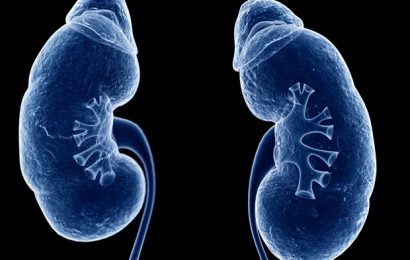
Artemisinin-based combination therapies (ACTs) are the globally-accepted first-line treatments for malaria—a mosquito-borne disease caused by the Plasmodium falciparum parasite that annually kills around 600,000 people, mostly children. Yet resistance to ACTs by P. falciparum has emerged in recent years in Africa, threatening their effectiveness.
To slow this resistance and reduce treatment failures, an international research team led by Penn State investigated various drug policy interventions in Rwanda, where artemisinin resistance was first reported in 2020.
Among other strategies, the team found that next-generation interventions such as triple ACTs (TACTs)—which combine an artemisinin derivative with two partner drugs or which use a sequential course of one ACT formulation, followed by a different ACT formulation—resulted in treatment failure counts that were at least 81% lower. Their results were published in Nature Medicine.
“The malaria drug-resistance situation in Rwanda is urgent,” said Robert Zupko assistant research professor of biology, Penn State. “If we let things continue as is, artemisinin-resistant genotypes will begin to dominate by the end of this decade. Of the two dozen interventions we evaluated, we found that TACTs—a treatment yet to be approved to treat malaria but undergoing clinical evaluations—was projected to minimize both treatment failures and drug resistance.”
Dr. Aline Uwimana, head of case management at the Rwanda Biomedical Center and a senior author on the study, cautioned that waiting for optimal therapies may not be the best approach as resistance could soon be widespread.
“Of the available and approved approaches that we evaluated for this study, there were several options using multiple first-line therapies, or MFT, that we could begin to put into place next year,” Uwimama said. “This is likely the most feasible choice in the near term.”
Under an MFT strategy, multiple therapies are deployed at once and different patients get treated with different drugs.
According to Maciej Boni, professor of biology, Penn State, the current situation in Rwanda is a repeat or “three-peat” of past malaria drug failures.
Since the 1940s, multiple antimalarial drugs have been deployed worldwide, but the eventual development of drug resistance in the malaria parasite forced the withdrawal of all of them.
In the 1990s, new artemisinin drugs were trialed and found to be effective, and by 2005 they were recommended worldwide, he said. The following year, Rwanda adopted the ACT artemether-lumefantrine (AL) as its first-line therapy for malaria, but by 2020, a mutation, known as “pfkelch13 R561H,” was shown to have emerged over the previous decade; the R561H mutation is associated with delayed clearance of the parasite in the presence of AL.
“Studies indicate that the pfkelch13 R561H mutation is increasing, but there still may be a window of opportunity to delay its spread and avert high numbers of treatment failures,” Boni said. “The World Health Organization has recommended that the Rwandan National Malaria Control Program begin considering strategies for mitigating the spread of pfkelch13 R561H.”
To address this recommendation, Zupko and Boni worked with the Rwandan National Malaria Control Program and the Rwanda Biomedical Center to develop plans for slowing down the spread of artemisinin resistance in Rwanda. Specifically, they examined a range of possible drug policy interventions and their ability to reduce long-term treatment failures. These included replacing AL as the first-line therapy with another artemisinin drug, introducing multiple drugs to be used in combination and lengthening the dosing schedule for AL from a three-day course of treatment to up to a five-day course of treatment.
Additionally, the researchers evaluated sequential therapy approaches—in which one drug is given for a period of time followed by another—and triple artemisinin combination therapies.
The team modeled the impacts of these strategies on projected treatment failures and the frequency of the R561H mutation within the Plasmodium genome three, five and 10 years into the future.
“We found that lengthening courses of treatment, deploying multiple drugs and implementing custom rotation strategies all provide a benefit when compared to the currently recommended three-day course of AL,” Zupko said.
Specifically, the researchers found that extending the use of AL from three to five days and using multiple drugs simultaneously are two strategies that may hold treatment failure rates at or near 10%.
In another study, which was published on July 29 in Nature Communications, the team looked more closely at triple artemisinin combination therapies (TACTs) in general African malaria settings. This work was done by two teams independently—the Penn State team and a University of Oxford modeling team led by associate professor Ricardo Aguas—to ensure that the results were not strongly influenced by the build and design of a single model.
“TACTs have been shown in clinical trials to be effective and well tolerated by patients, and the fact that early TACT adoption may delay the emergence and spread of antimalarial drug resistance is a modeling result of vital importance,” Boni said.
Zupko noted that the results of the research underscore what is already known from historical experience—drug resistance can spread rapidly once it is established.
“It is important to quickly implement an antimalarial policy that contains the spread of artemisinin resistance, including the immediate introduction of TACTs,” he said.
More information:
Nature Medicine (2023). DOI: 10.1038/s41591-023-02551-w
Tran Dang Nguyen et al, Preventing antimalarial drug resistance with triple artemisinin-based combination therapies, Nature Communications (2023). DOI: 10.1038/s41467-023-39914-3
Journal information:
Nature Communications
,
Nature Medicine
Source: Read Full Article


